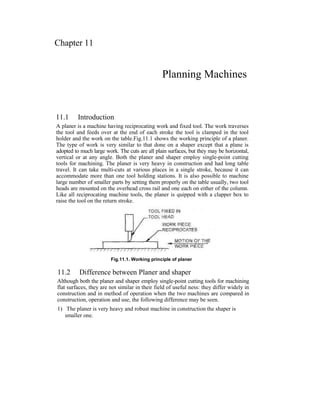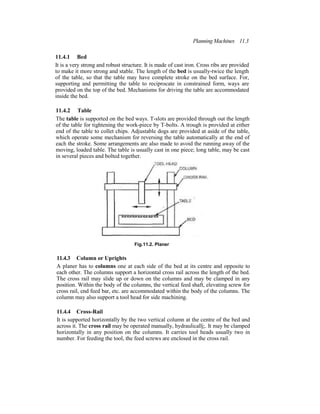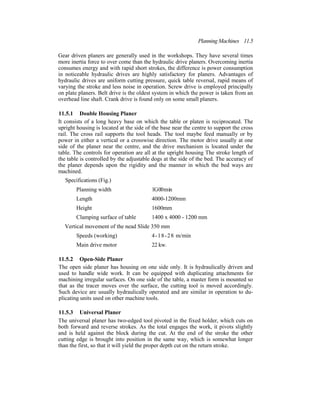This document provides information about planer machines. It begins with an introduction and overview of planers, noting they have reciprocating work and fixed tools. It then discusses the differences between planers and shapers, noting key differences in construction, operation, size, accuracy and power consumption. The document outlines the main parts of a planer, including the bed, table, columns, cross-rail and tool heads. It also describes various types of planers based on construction and drive methods. In closing, it discusses quick return mechanisms and feed mechanisms used in planers.










